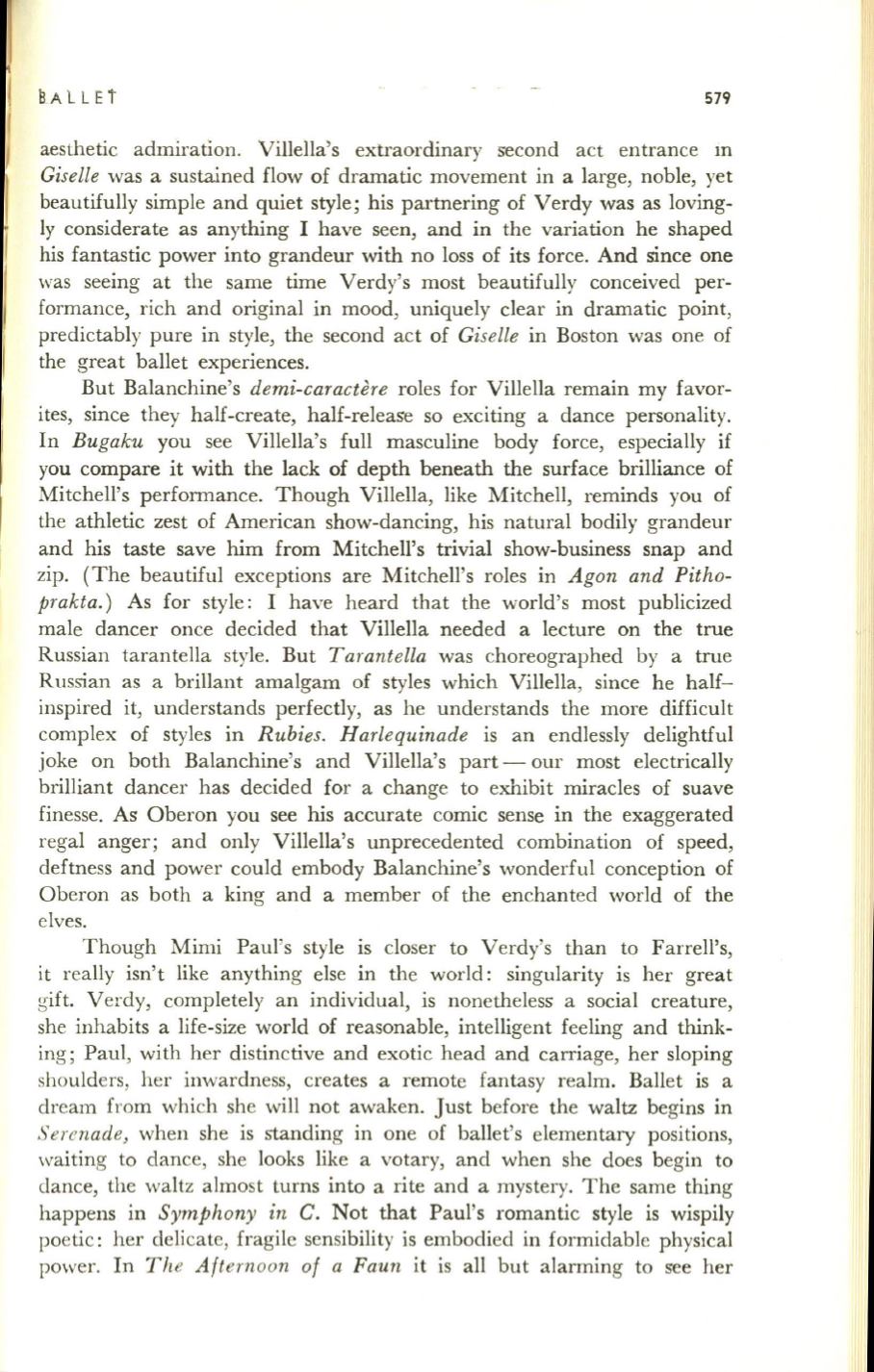
579
aesthetic admiration. Villella's extraordinary second act entrance
10
Giselle
was a sustained flow of dramatic movement in a large, noble, yet
beautifully simple and quiet style; his partnering of Verdy was as loving–
ly considerate as anything I have seen, and in the variation he shaped
his fantastic power into grandeur with no loss of its force. And since one
was seeing at the same time Verdy's most beautifully conceived per–
formance, rich and original in mood, uniquely clear in dramatic point,
predictably pure in style, the second act of
Giselle
in Boston was one of
the great ballet experiences.
But Balanchine's
demi-caractere
roles for Villella remain my favor–
ites, since they half-create, half-release so exciting a dance personality.
In
Bugaku
you see Villella's full masculine body force, especially if
you compare it with the lack of depth beneath the surface brilliance of
Mitchell's performance. Though Villella, like Mitchell, reminds you of
the athletic zest of American show-dancing, his natural bodily grandeur
and his taste save him from Mitchell's trivial show-business snap and
zip. (The beautiful exceptions are Mitchell's roles in
Agon and Pitho–
prakta.)
As for style: I have heard that the world's most publicized
male dancer once decided that Villella needed a lecture on the true
Russian tarantella style. But
Tarantella
was choreographed by a true
Russian as a brillant amalgam of styles which Villella, since he half–
inspired it, understands perfectly, as he understands the more difficult
complex of styles in
Rubies. Harlequinade
is an endlessly delightful
joke on both Balanchine's and Villella's part - our most electrically
brilliant dancer has decided for a change to exhibit miracles of suave
finesse. As Oberon you see his accurate comic sense in the exaggerated
regal anger; and only Villella's unprecedented combination of speed,
deftness and power could embody Balanchine's wonderful conception of
Oberon as both a king and a member of the enchanted world of the
elves.
Though Mimi Paul's style is closer to Verdy's than to Farrell's,
it really isn't like anything else in the world: singularity is her great
gift. Verdy, completely an individual, is nonetheless a social creature,
she inhabits a life-size world of reasonable, intelligent feeling and think–
ing; Paul, with her distinctive and exotic head and carriage, her sloping
shoulders, her inwardness, creates a remote fantasy realm. Ballet is a
dream from which she will not awaken. Just before the waltz begins in
Serenade,
when she is standing in one of ballet's elementary positions,
waiting to dance, she looks like a votary, and when she does begin to
dance, the waltz almost turns into a rite and a mystery. The same thing
happens in
Symphony in
C. Not that Paul's romantic style is wispily
poetic: her delicate, fragile sensibility is embodied in formidable physical
power. In
Th e Afternoon of a Faun
it is all but alarming to see her


